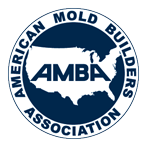Can Corrosion Transfer From Mold Cavity To Part?
Consulting with a metallurgist yields insight into the causes of corrosion in a mold, and how our injection molding process keeps it at bay.
Informal Problem Solving
Unstructured, or informal, problem solving in injection molding is based on one’s own experience and lessons learned.
Molding Robotics circa 2008
This blog is a look back at how molding robotics had evolved at Matrix up to 2008, including the addition of the Flex Teach PC-based programming system.
Scientific Micro Molding
In order to achieve scientific micro molding, it is important to look beyond the injection stages of the molding process and consider all the steps needed for a robust, repeatable process.
Structured Problem Solving
Structured, or formal, problem solving tools help identify root causes and lead to solutions as well as process improvements in injection molding.
Structured Problem Solving (continued): Beyond "5 Whys"
A continuation of the previous blog on structured problem solving that discusses "Cause and Effect" or "Fishbone Diagrams"
Read more: Structured Problem Solving (continued): Beyond "5 Whys"
The Three R’s of Injection Molding
Matrix Plastic Products is serious about being environmentally responsible and practicing the 3 R’s:
Reduce - Reuse - Recycle
The Value of DOE in Injection Molding
Design of Experiments (“DOE”) is a powerful tool for evaluating and validating the injection molding process. Matrix utilizes Nautilus software to identify key input variables to control process variation.
Two-Stage Injection Molding
Two-stage (plunger-style) injection molding technology provides several advantages over the traditional reciprocating screw method when processing thin-walled, difficult to fill components.
_horizontal_white_536x129.png)

